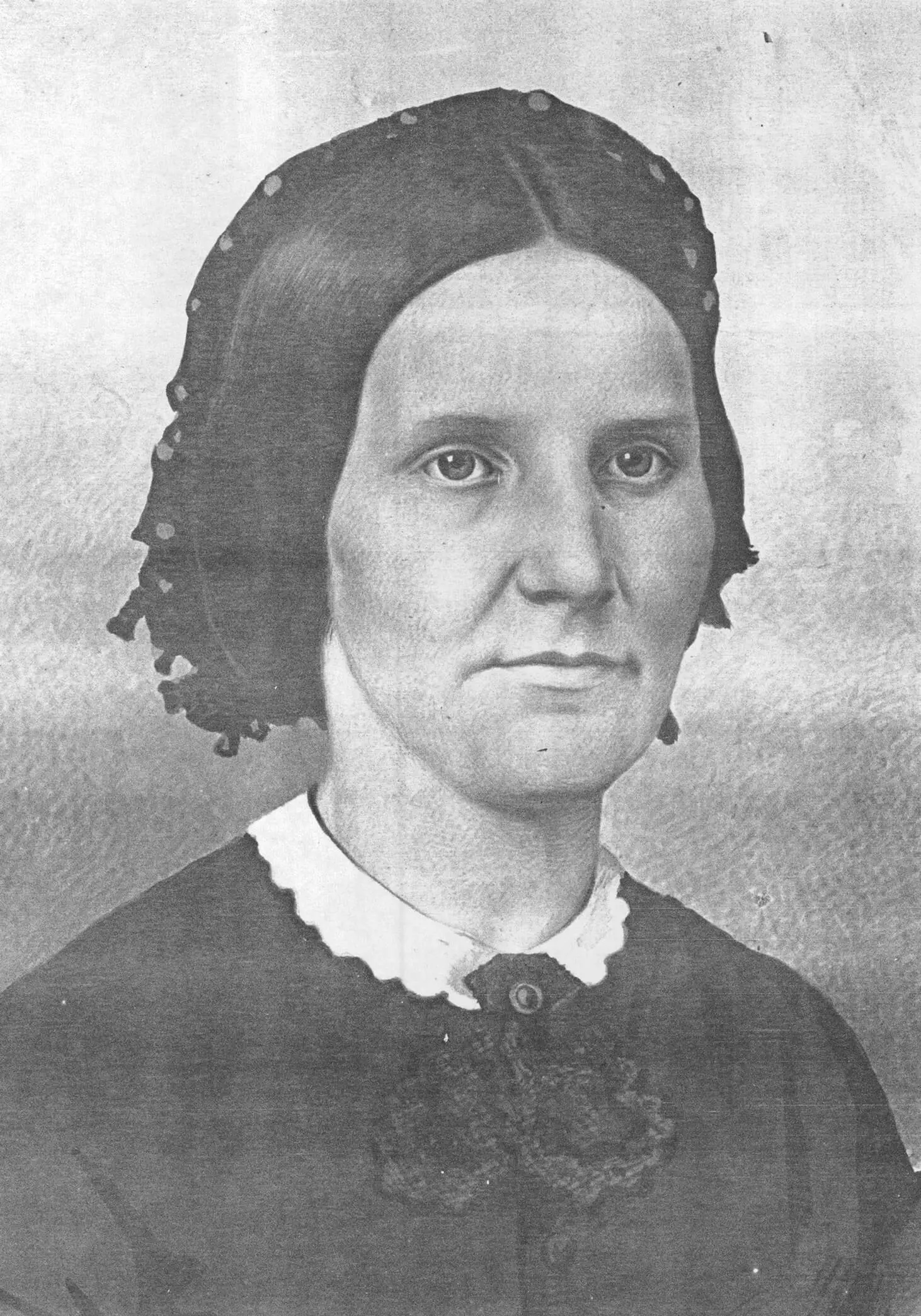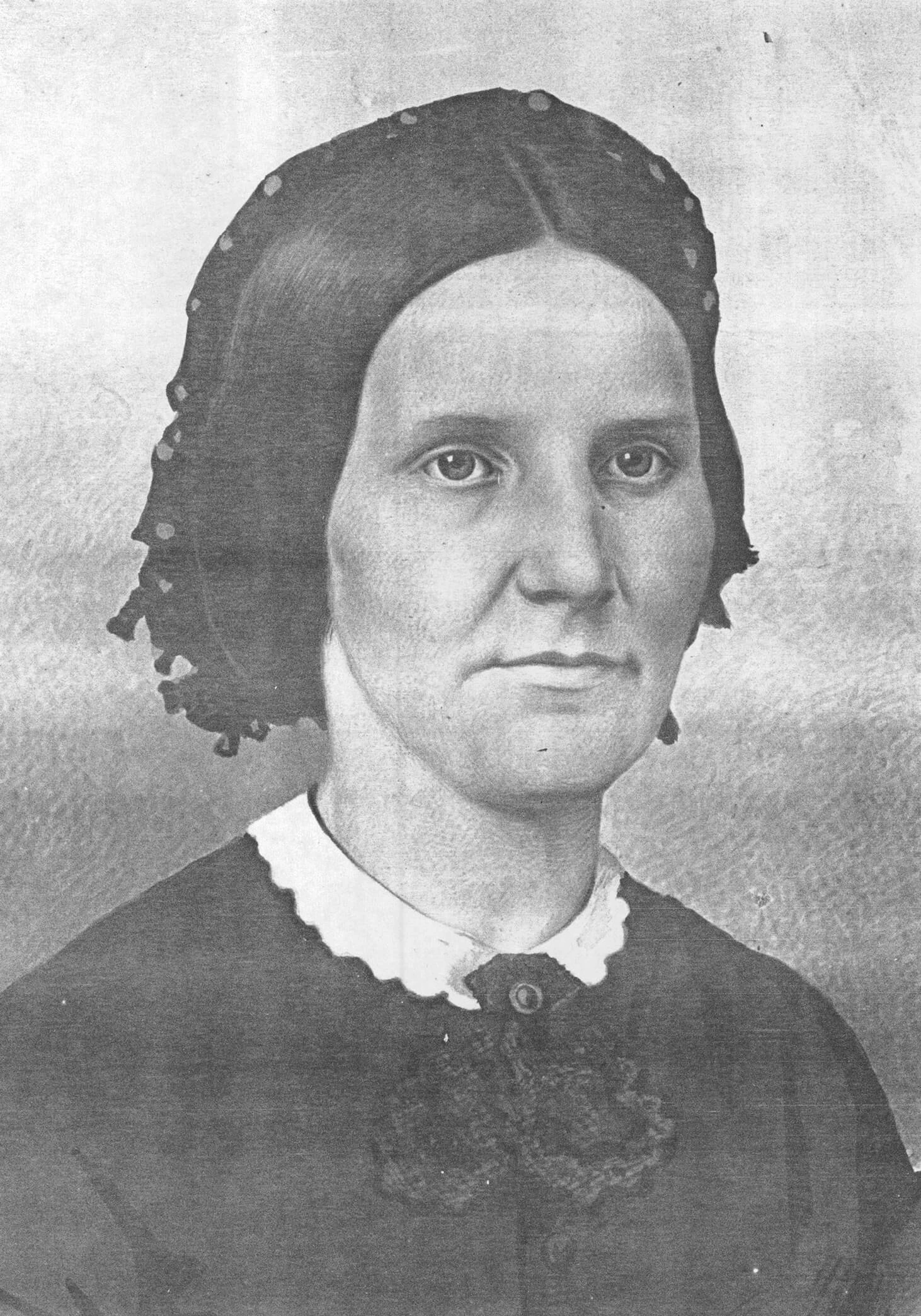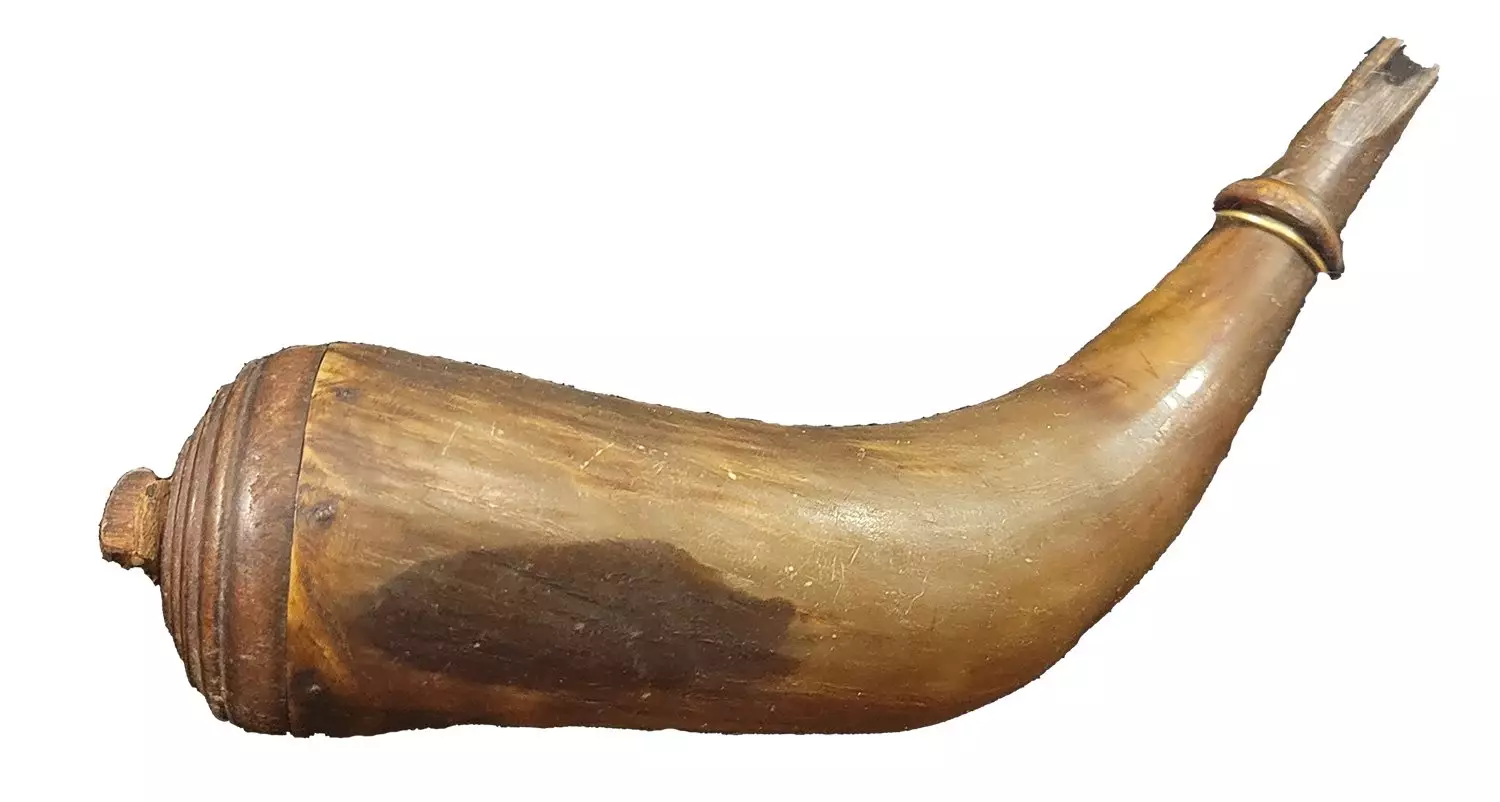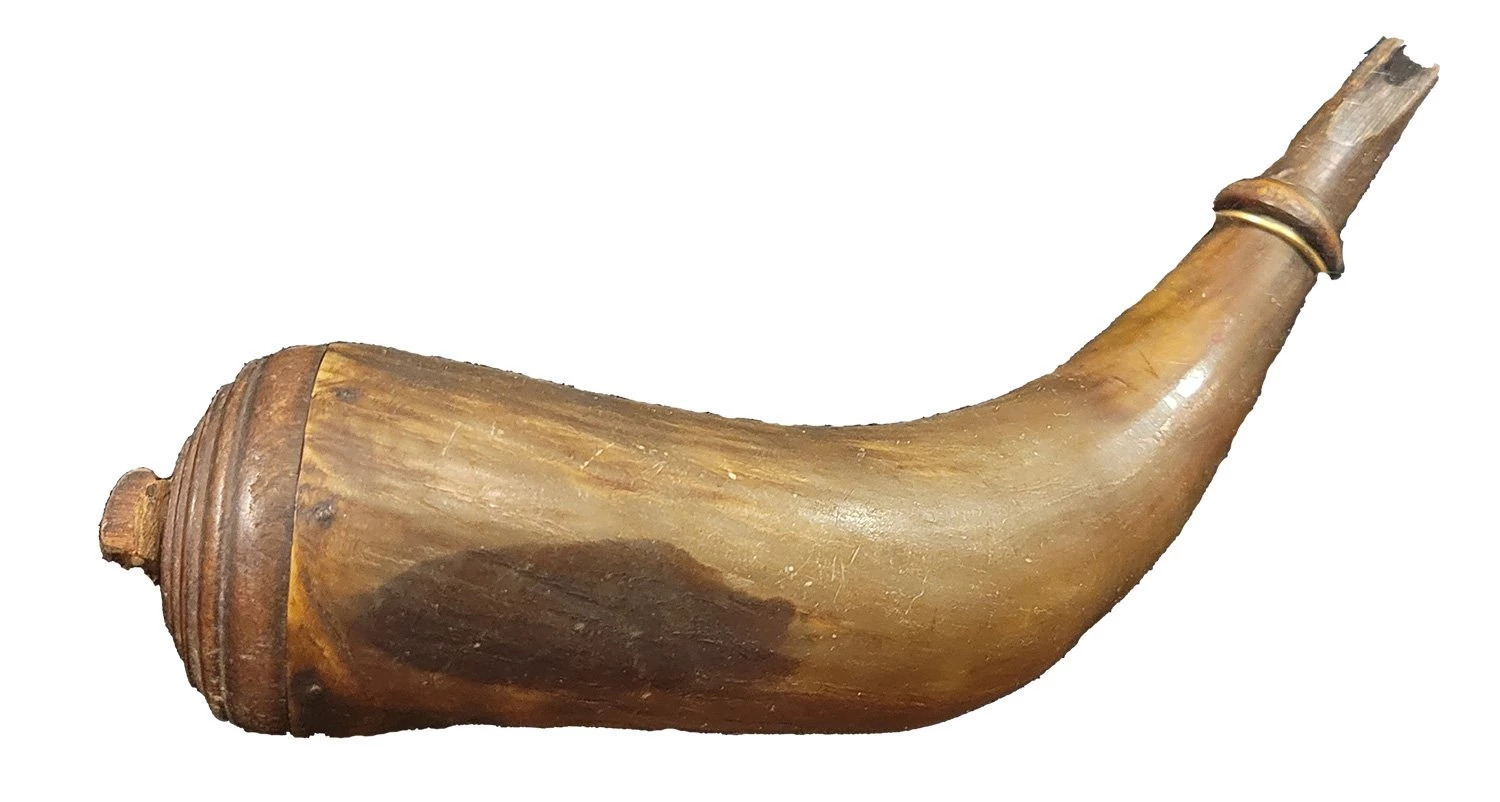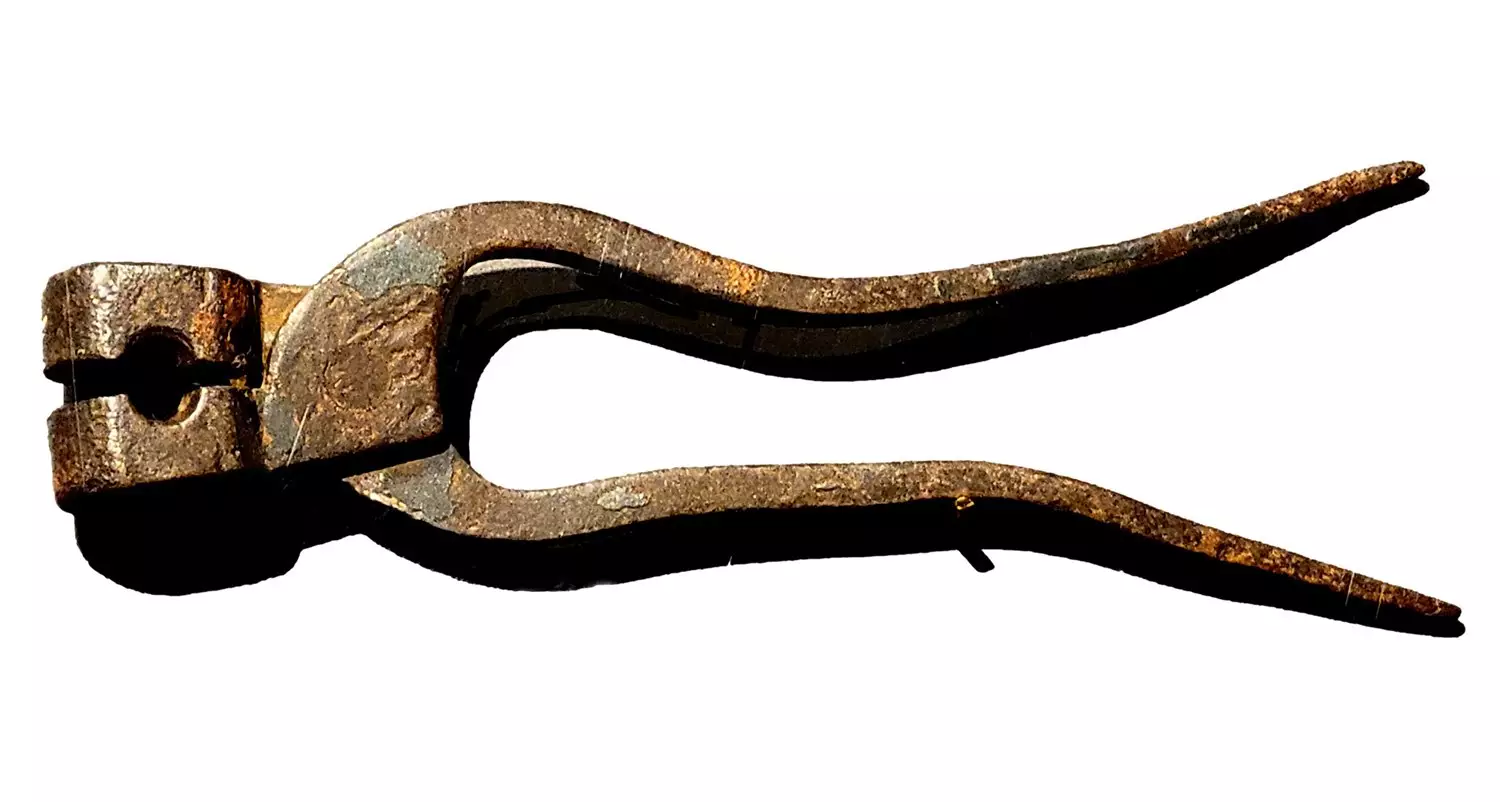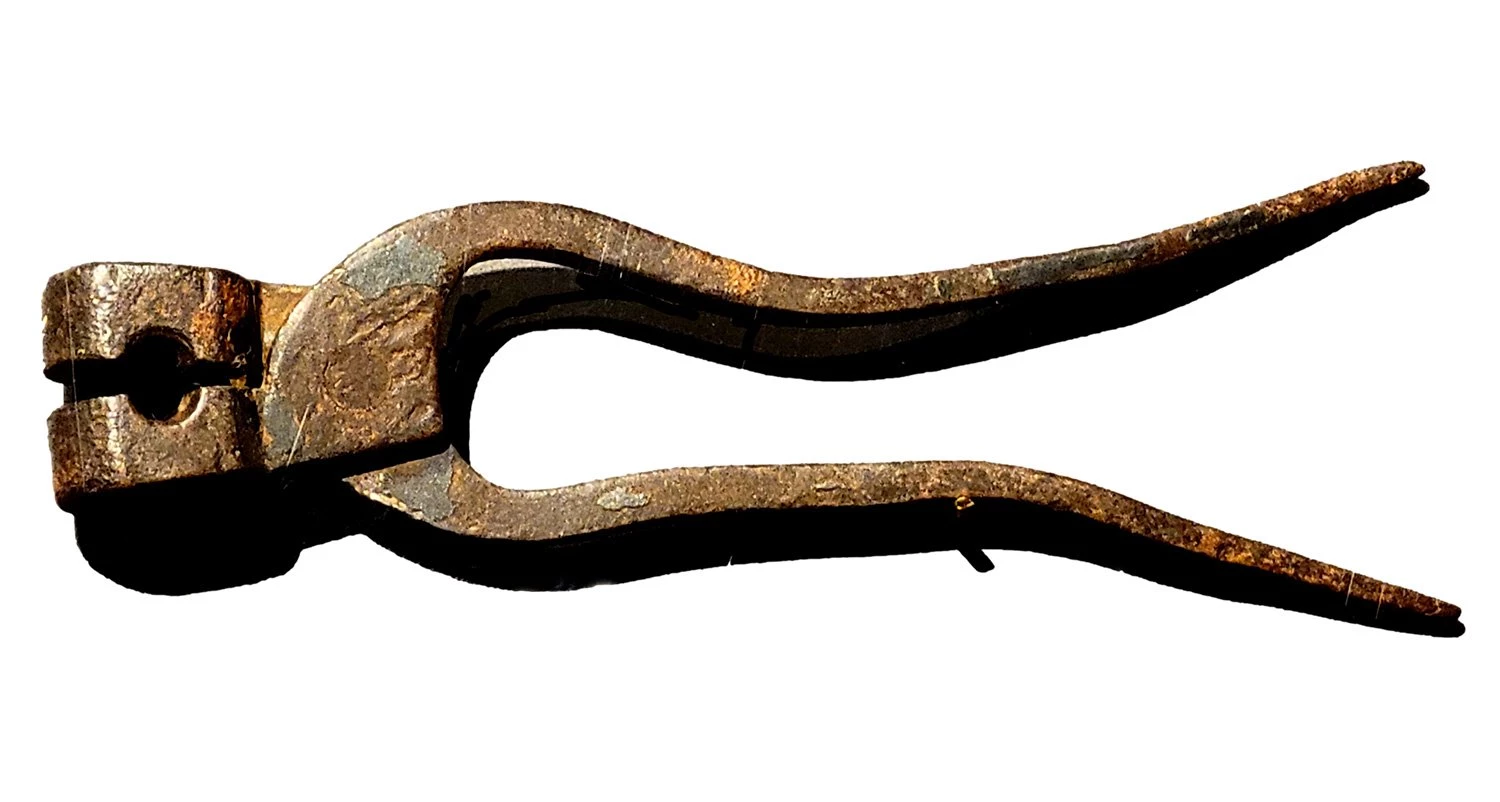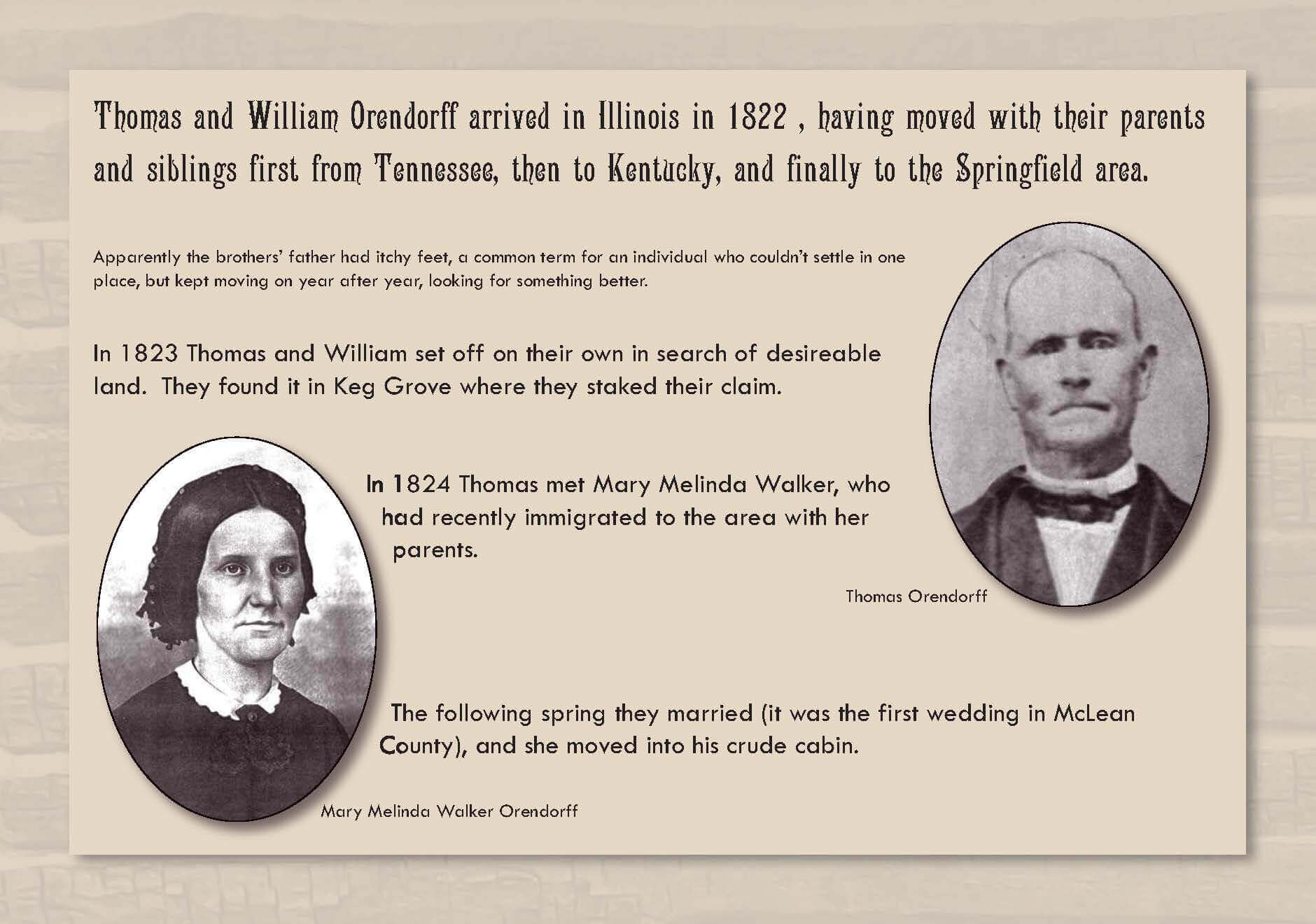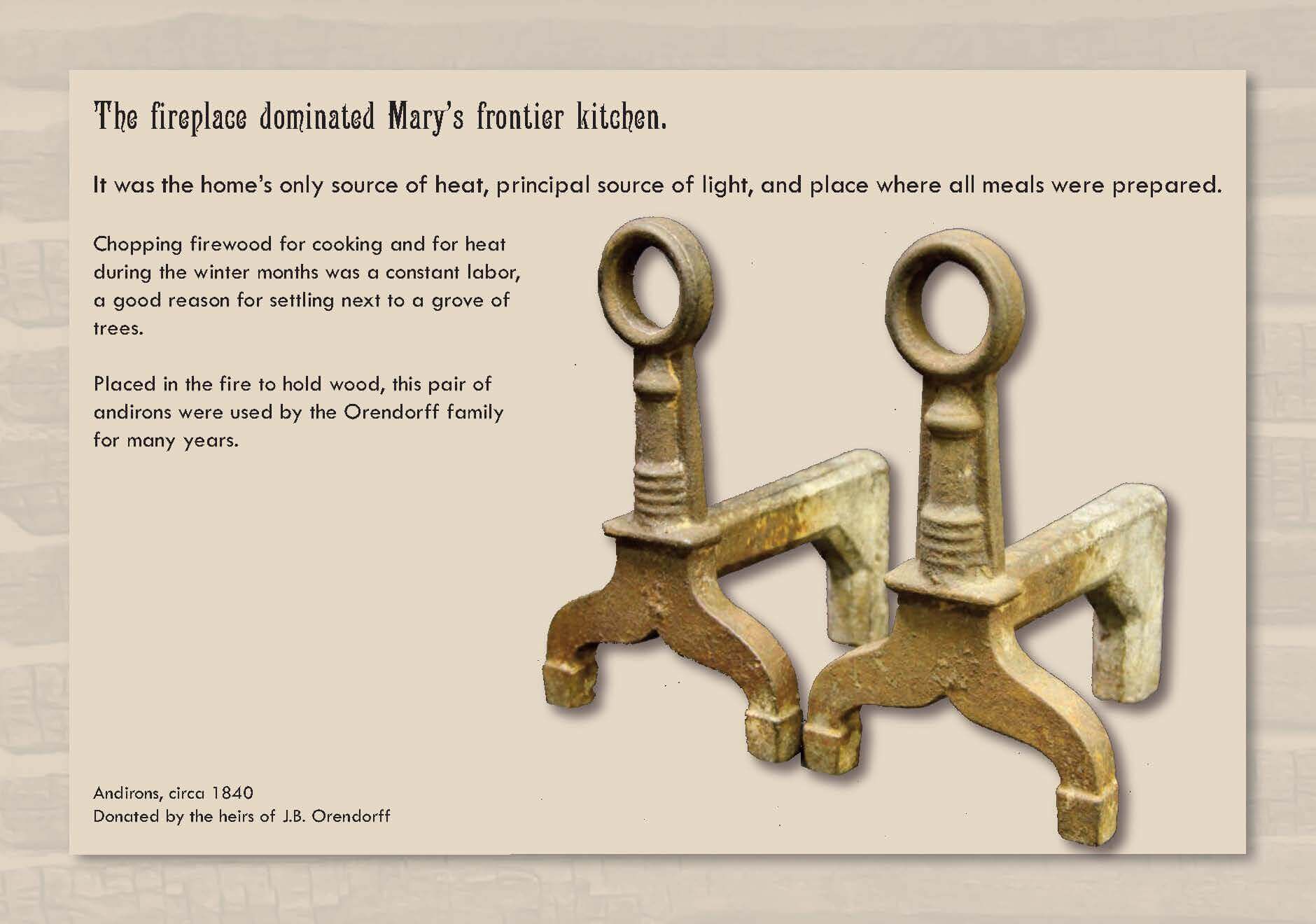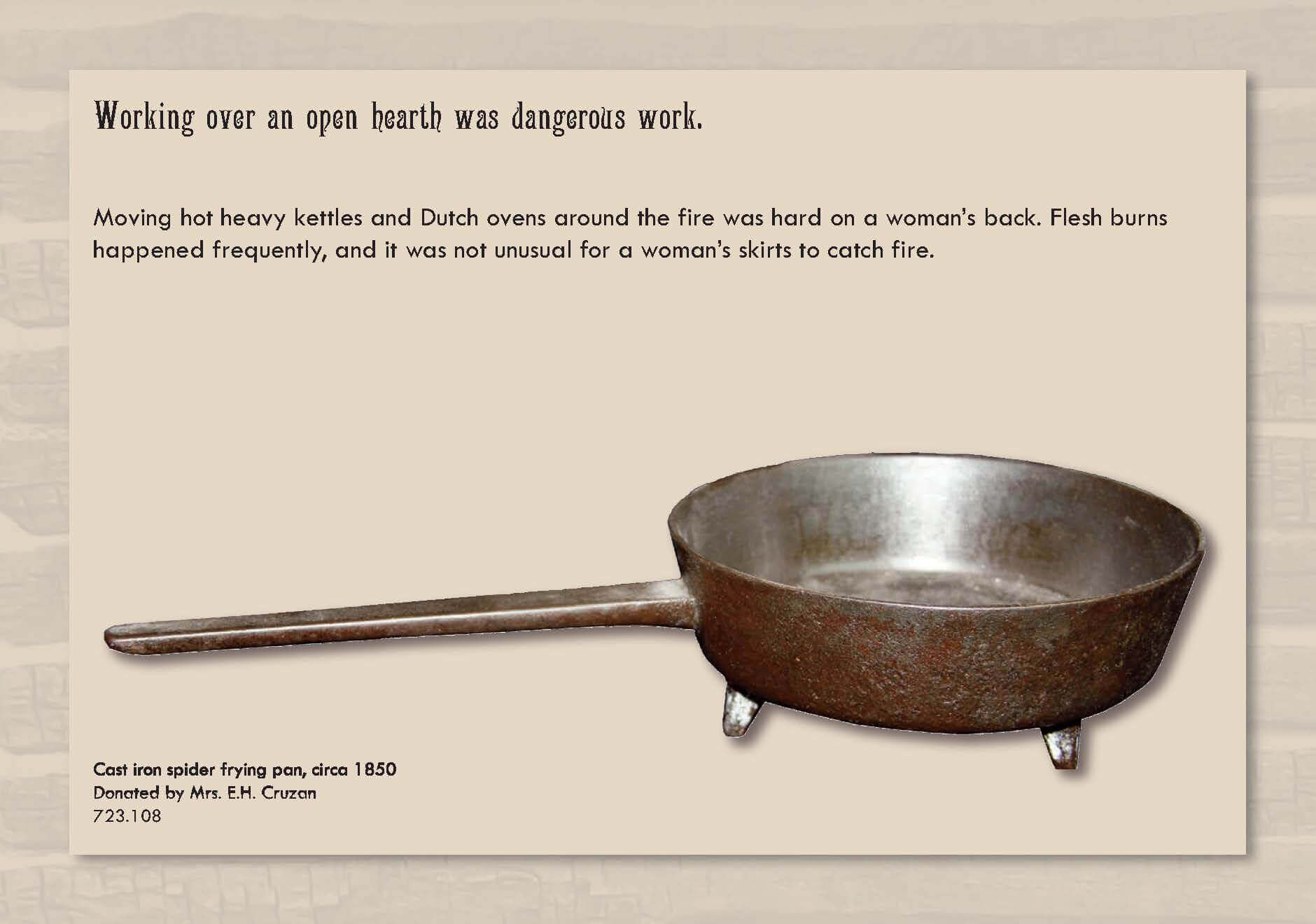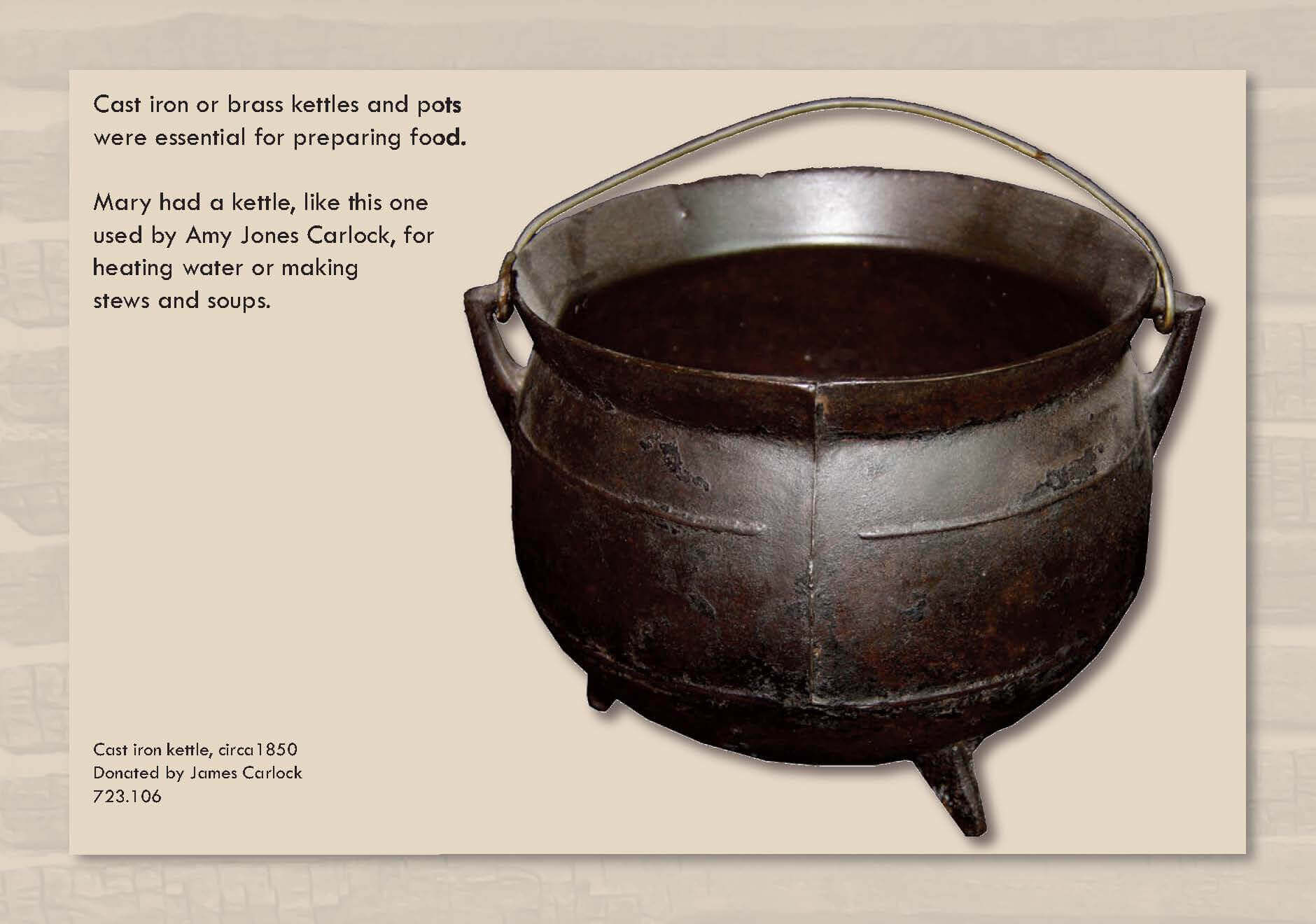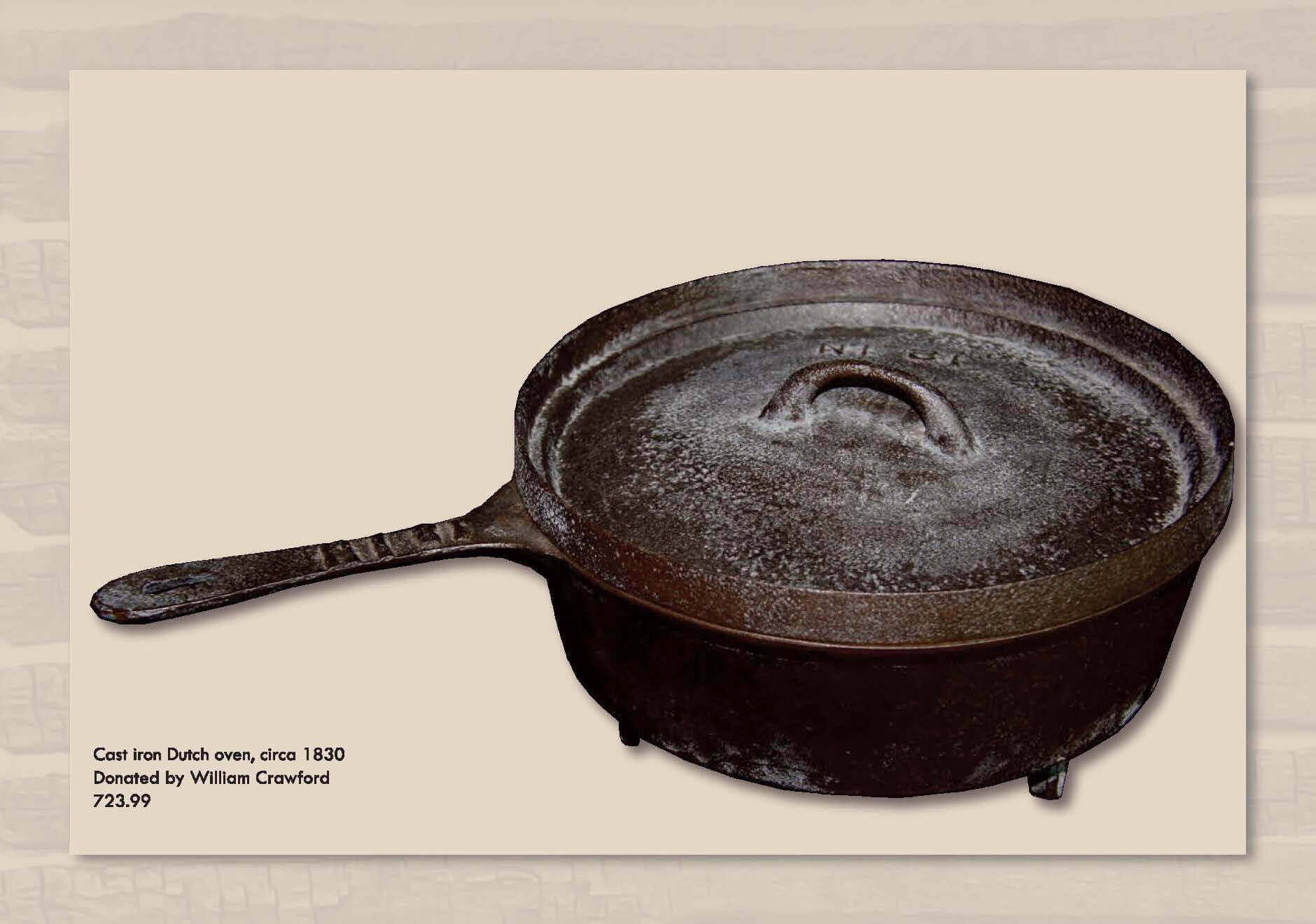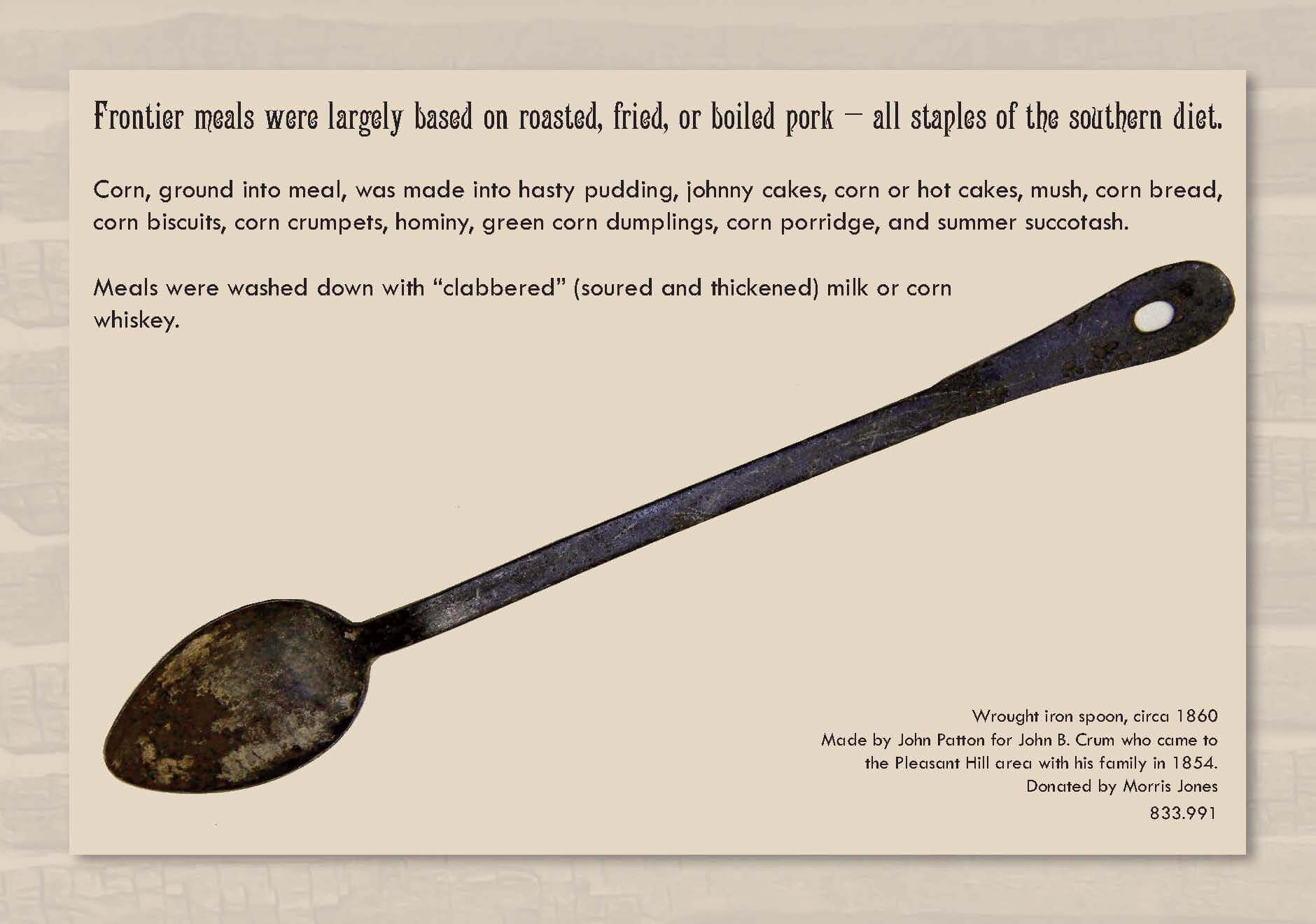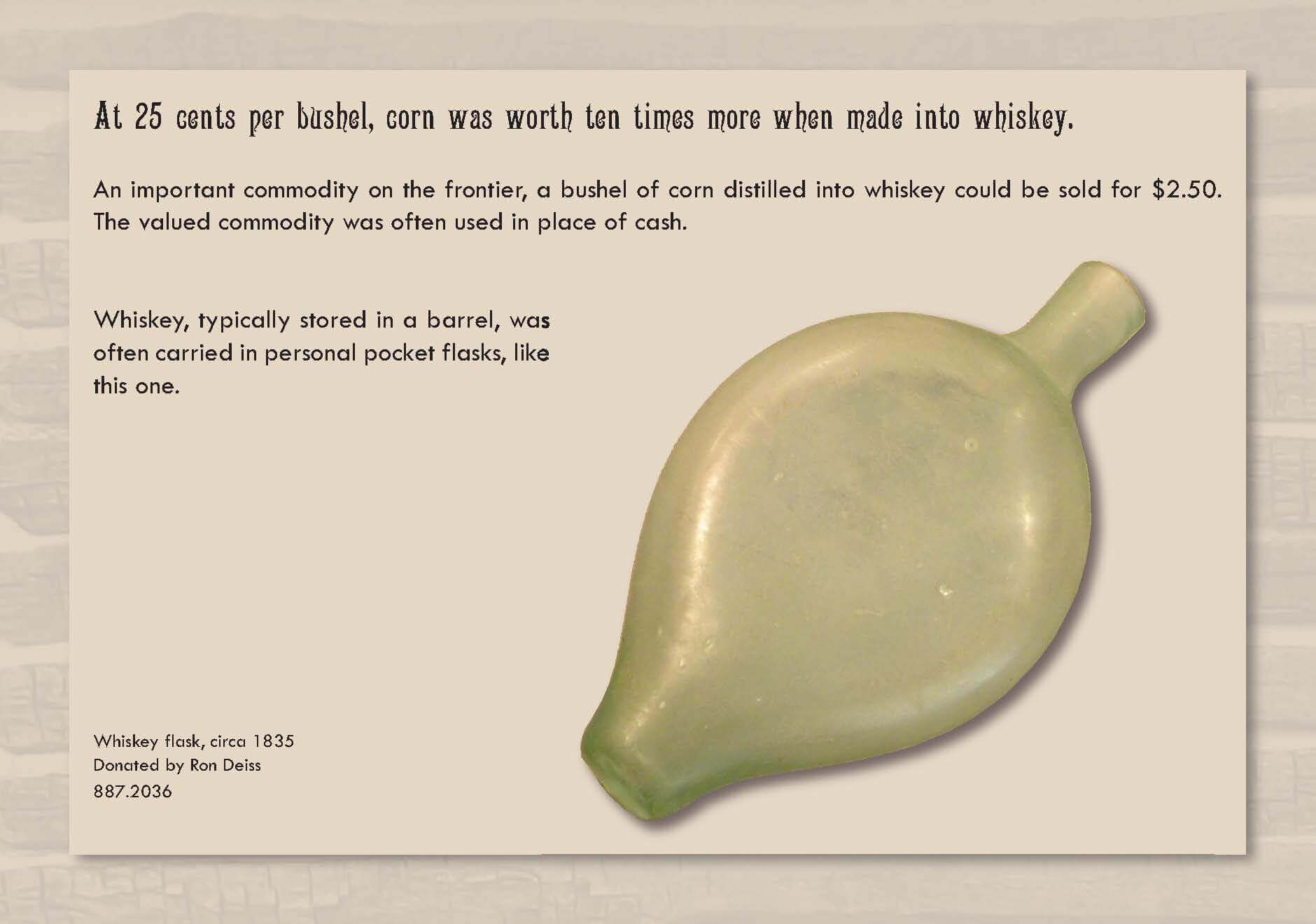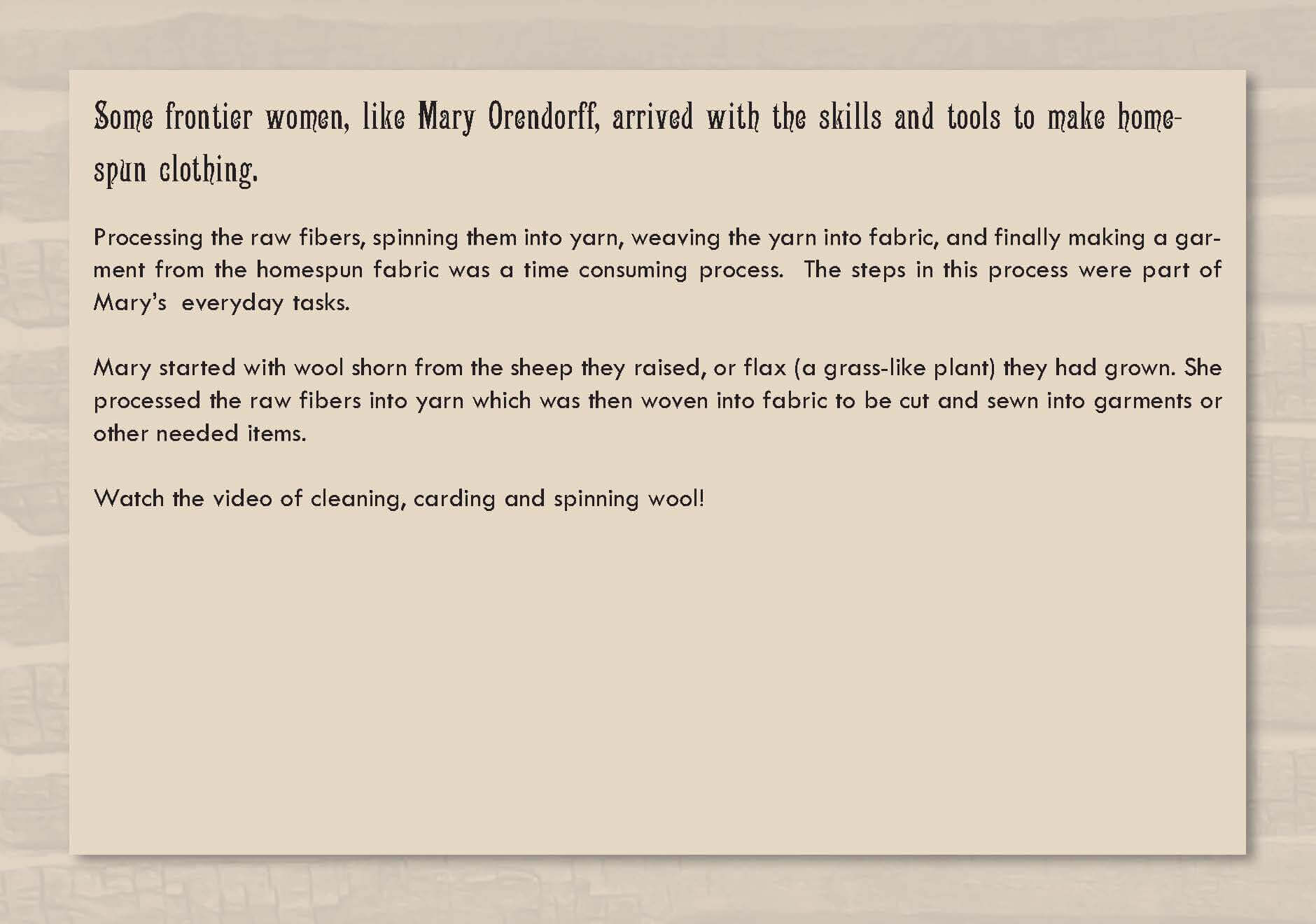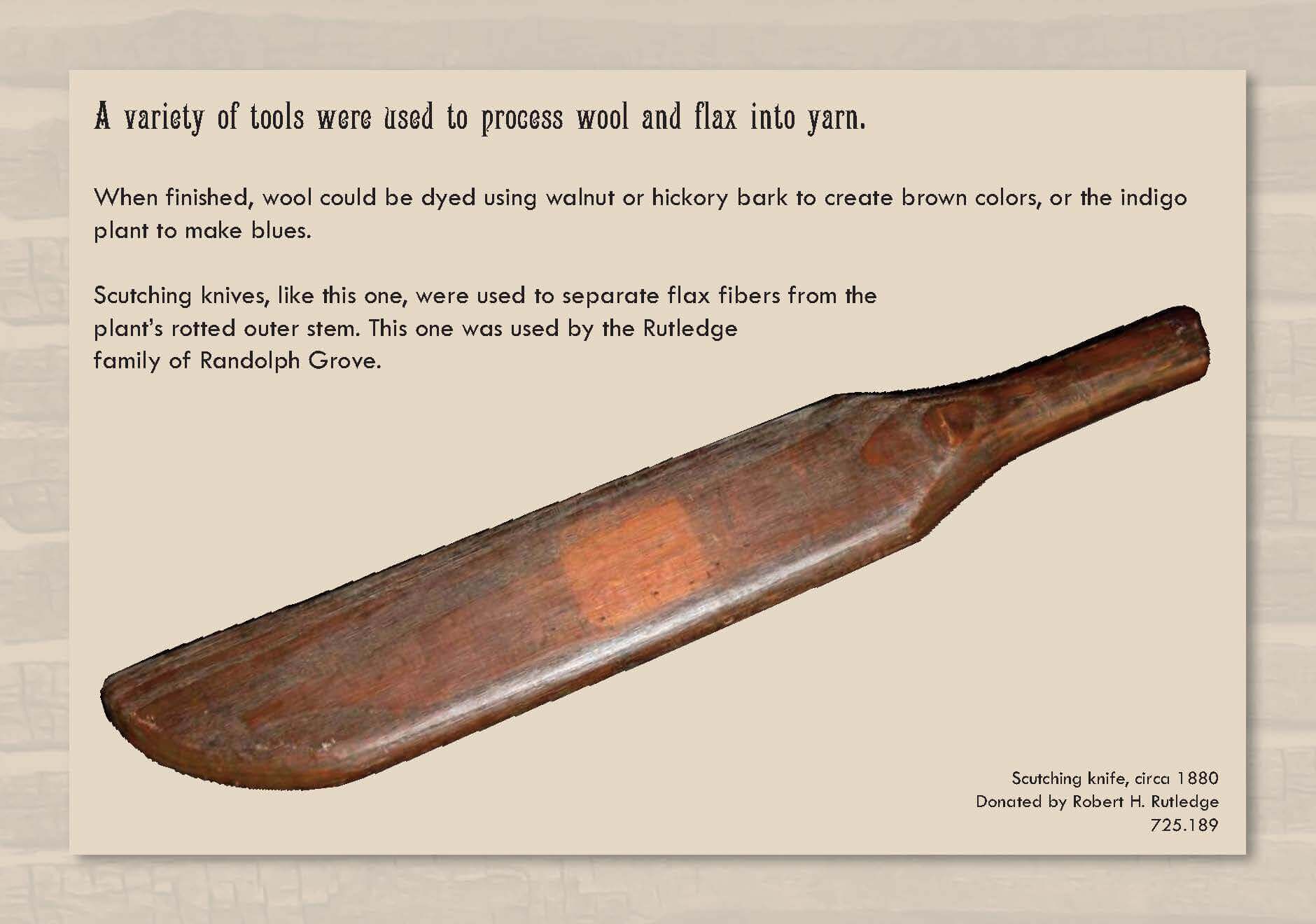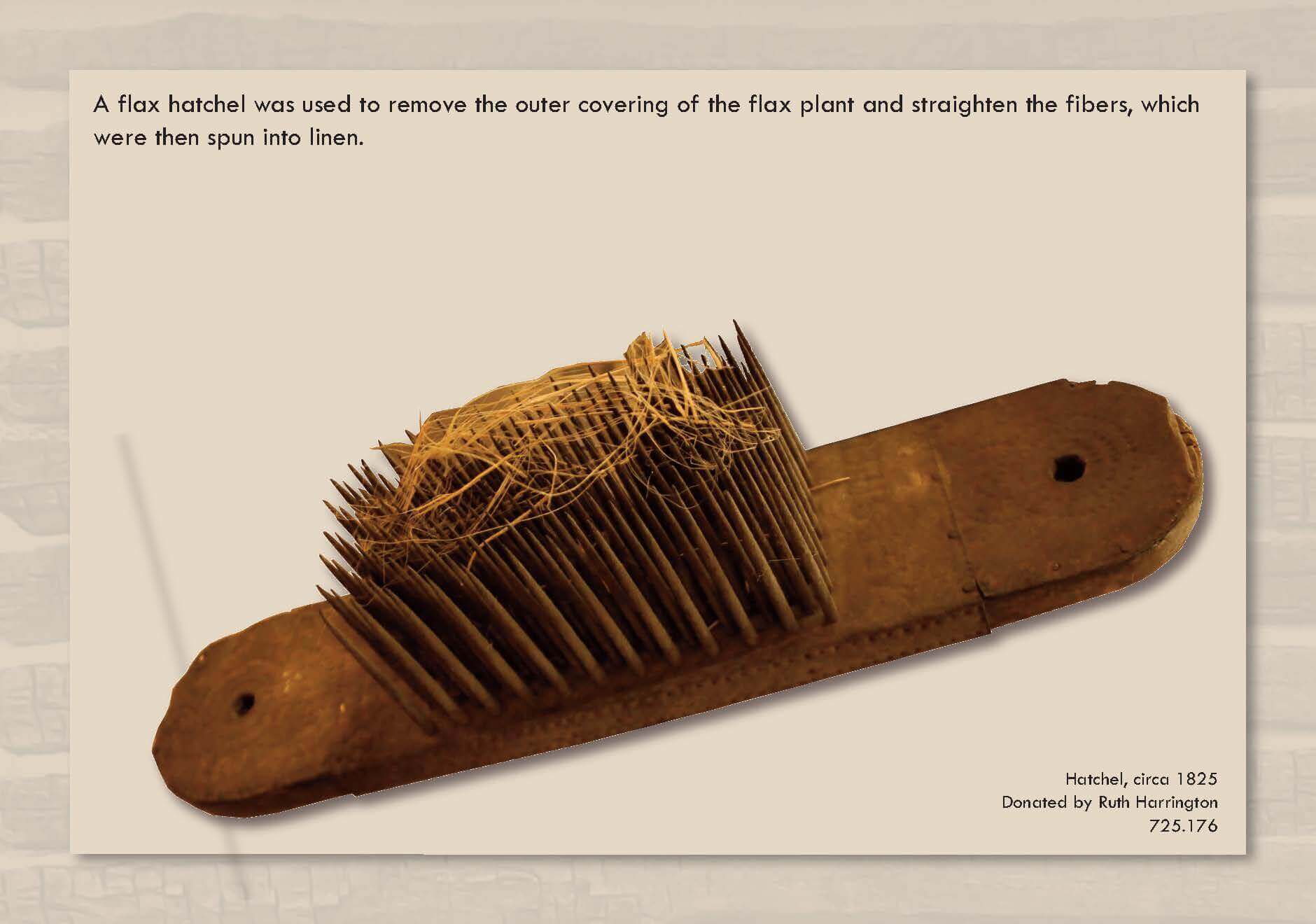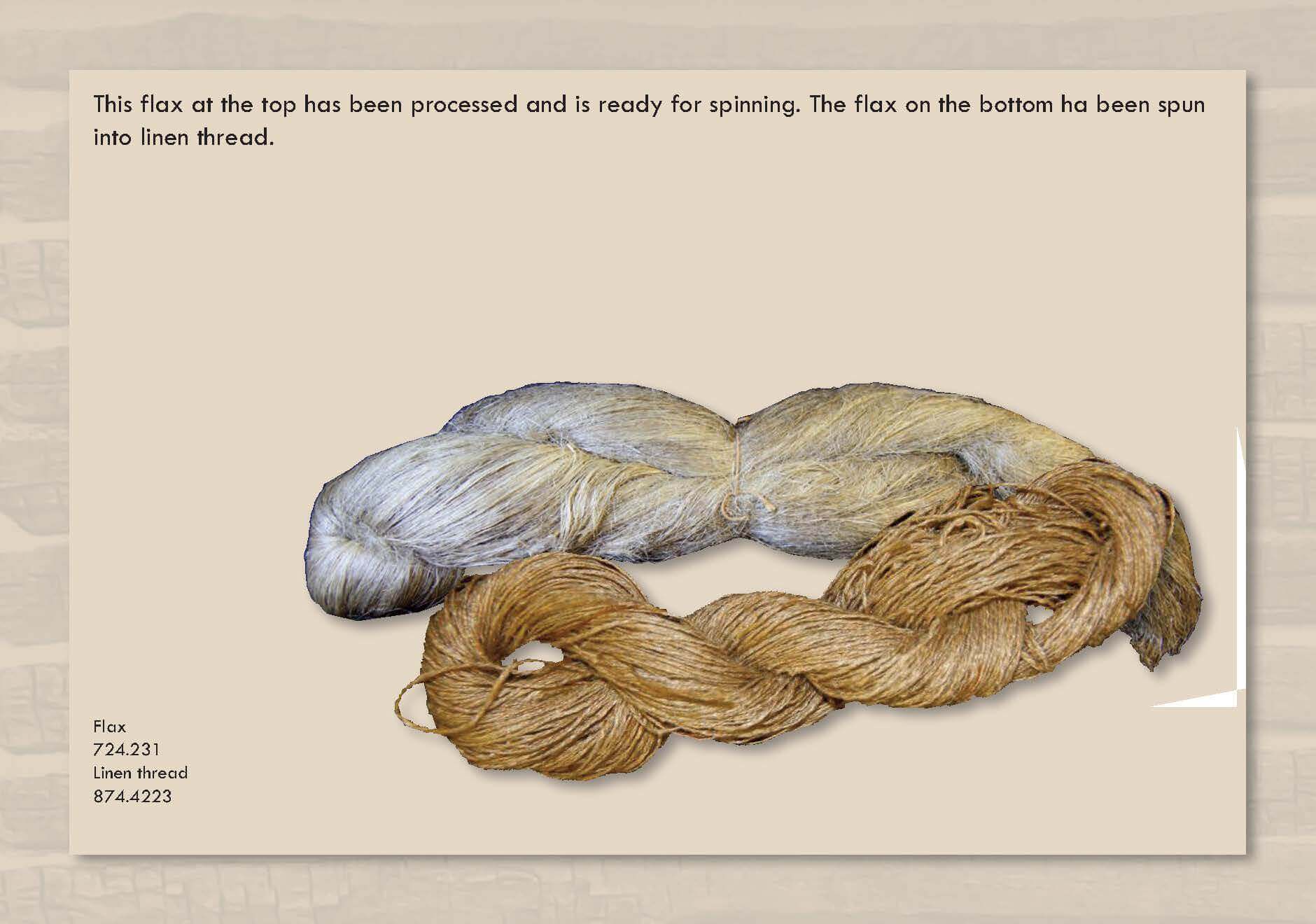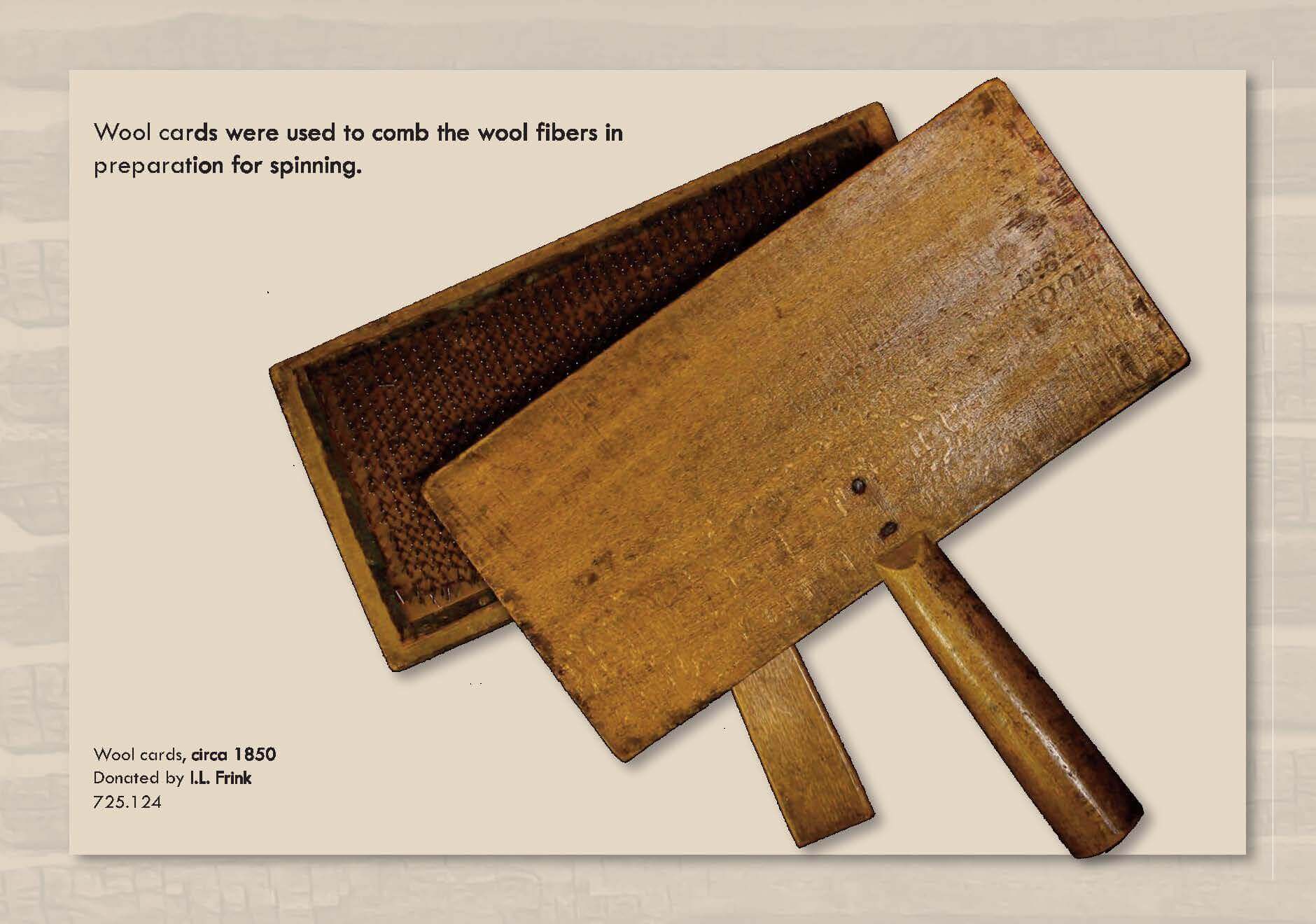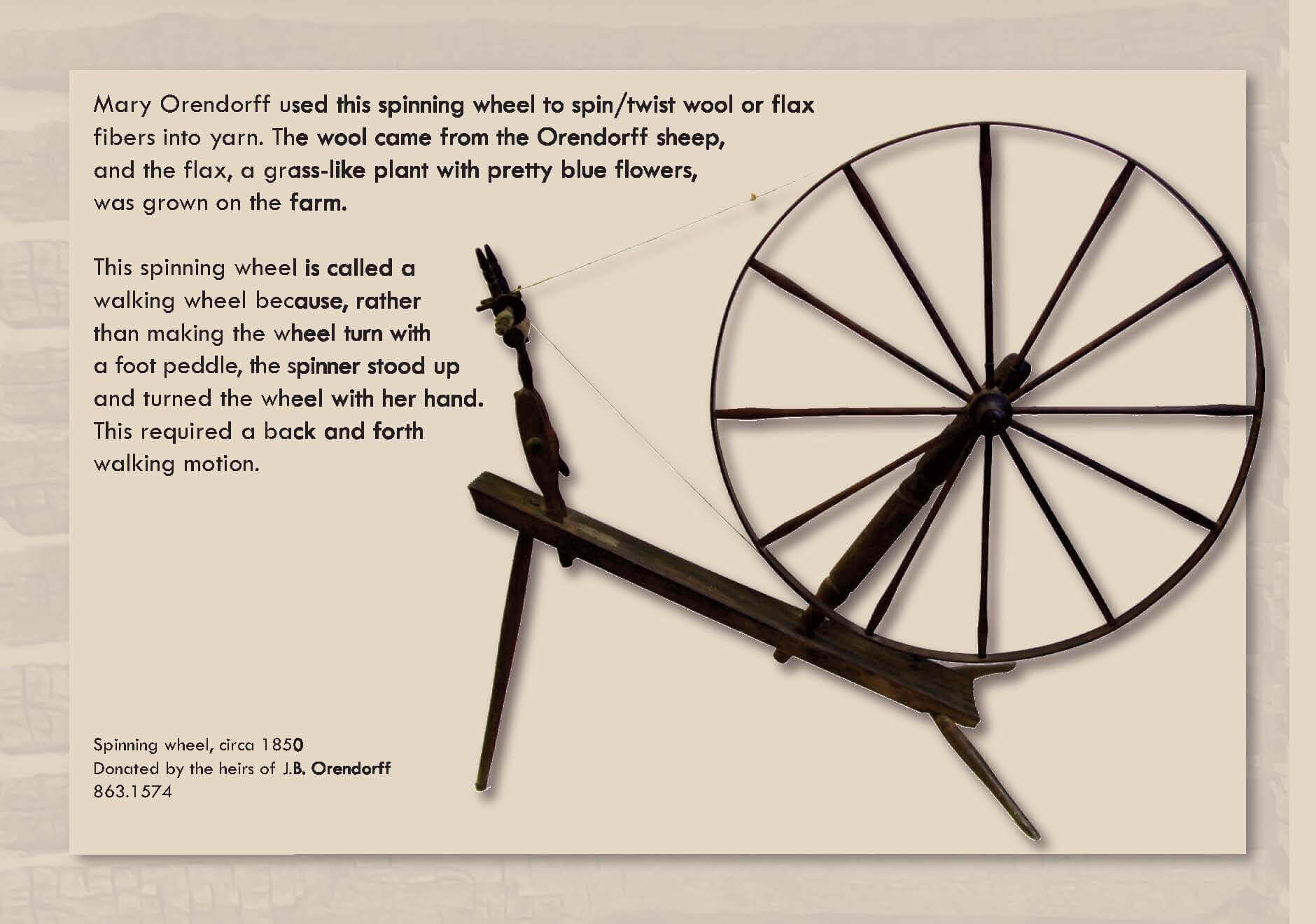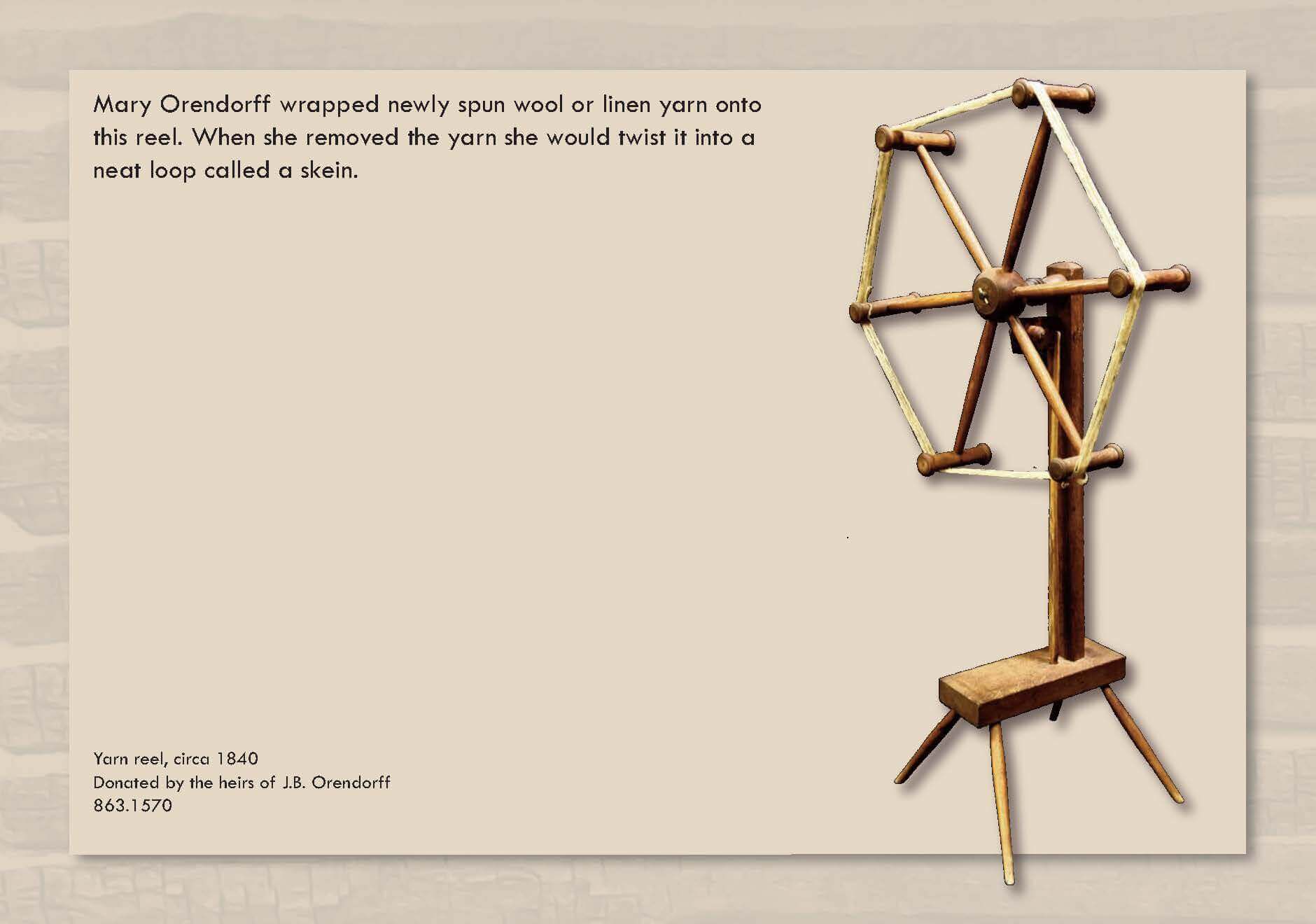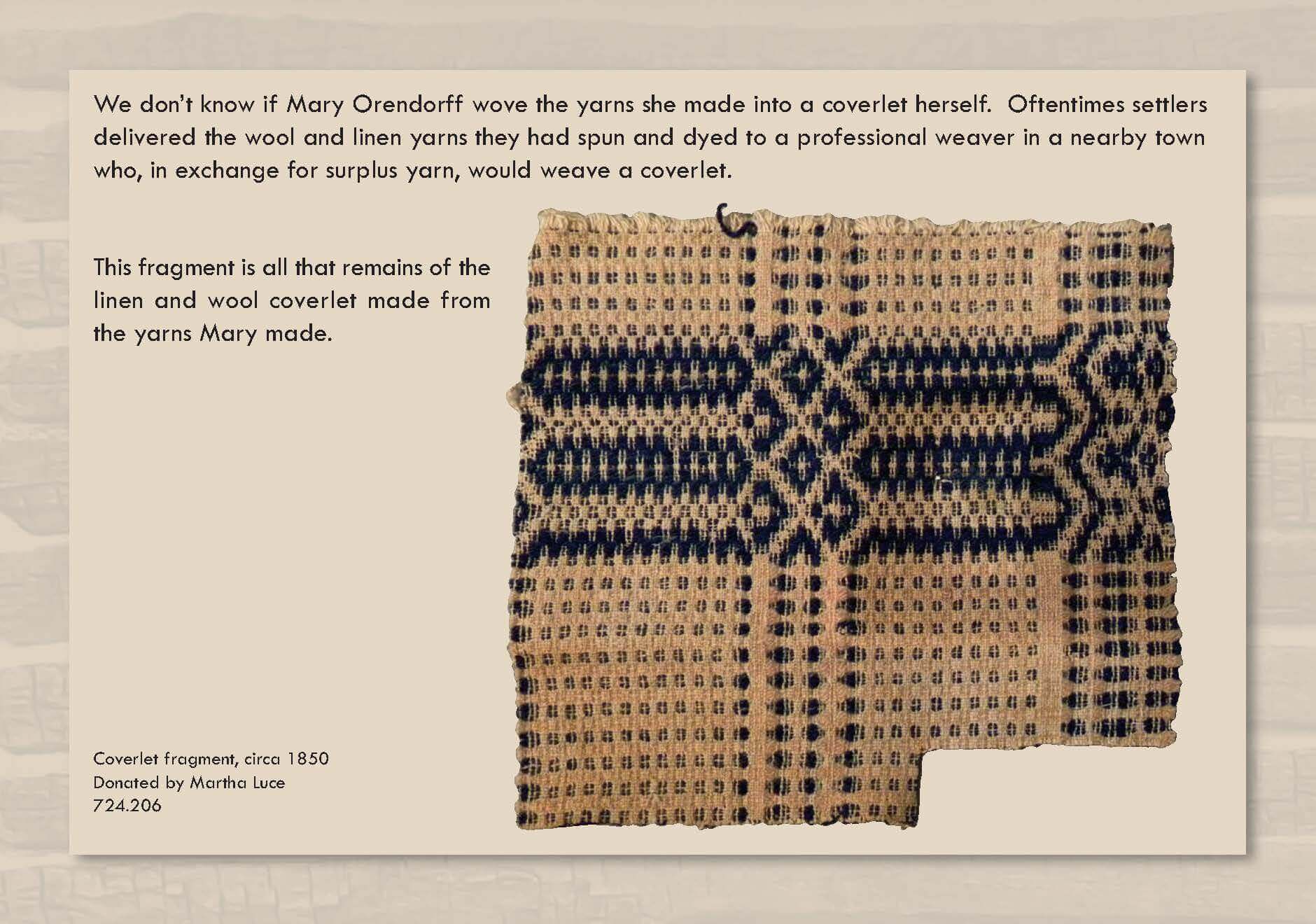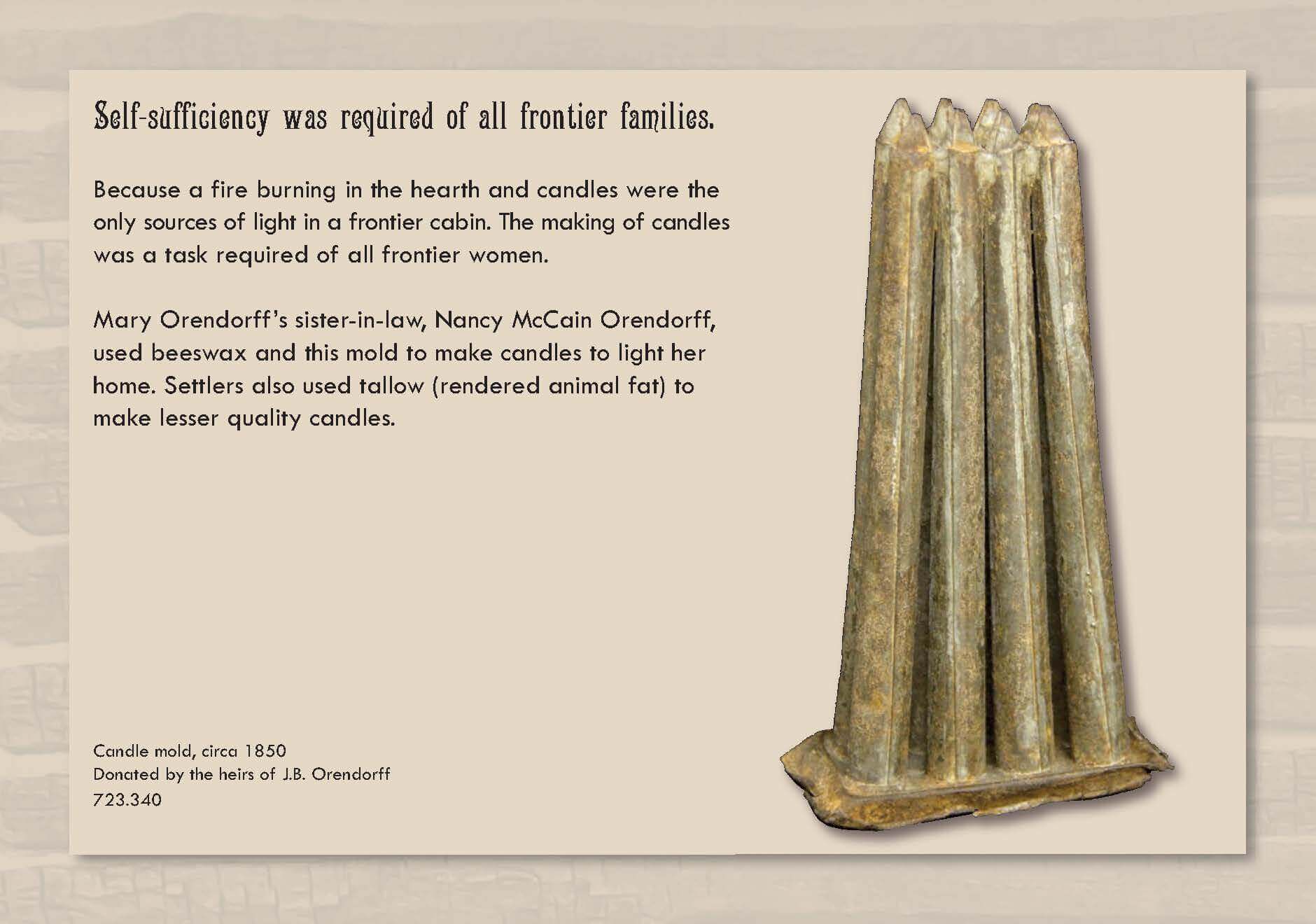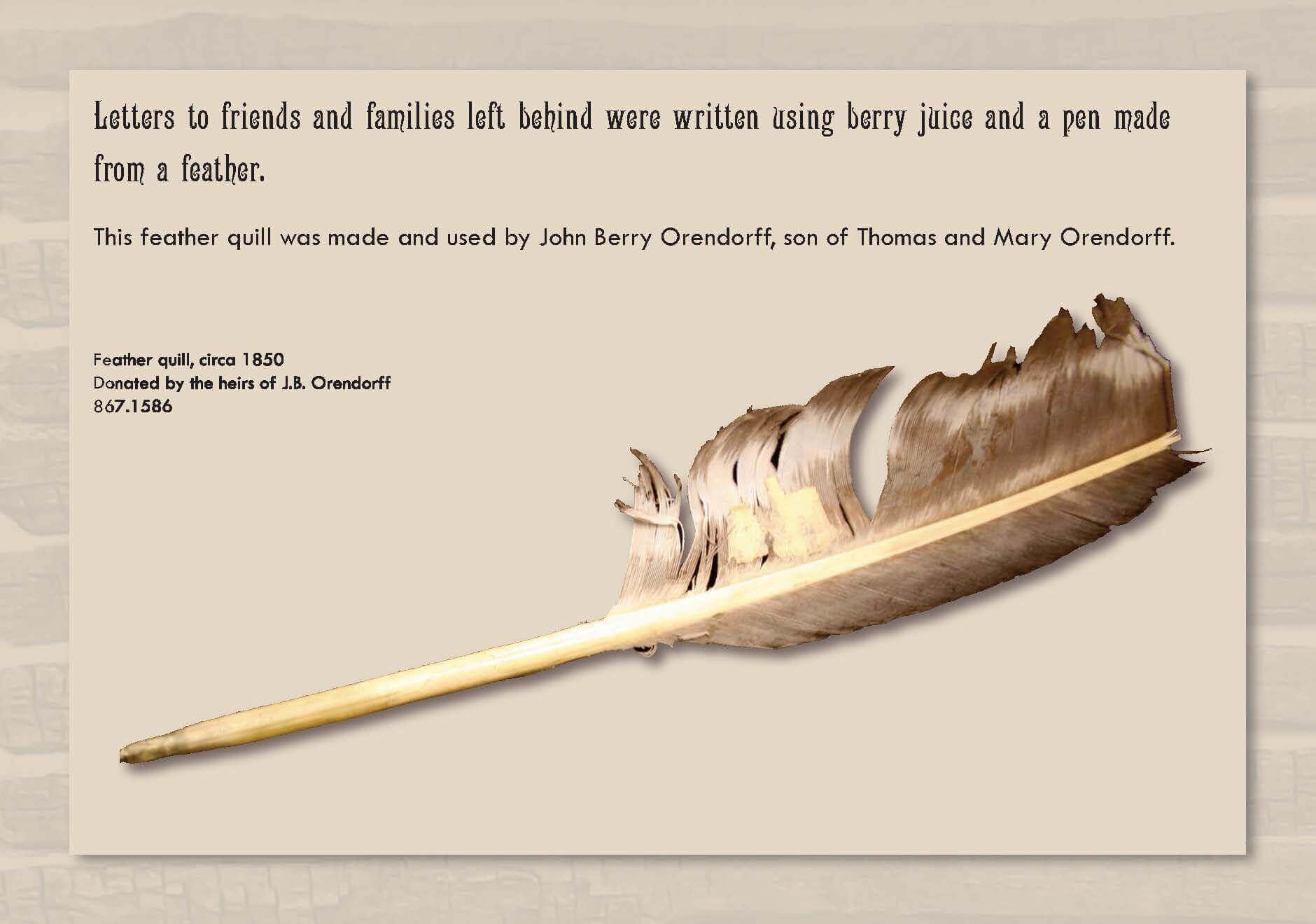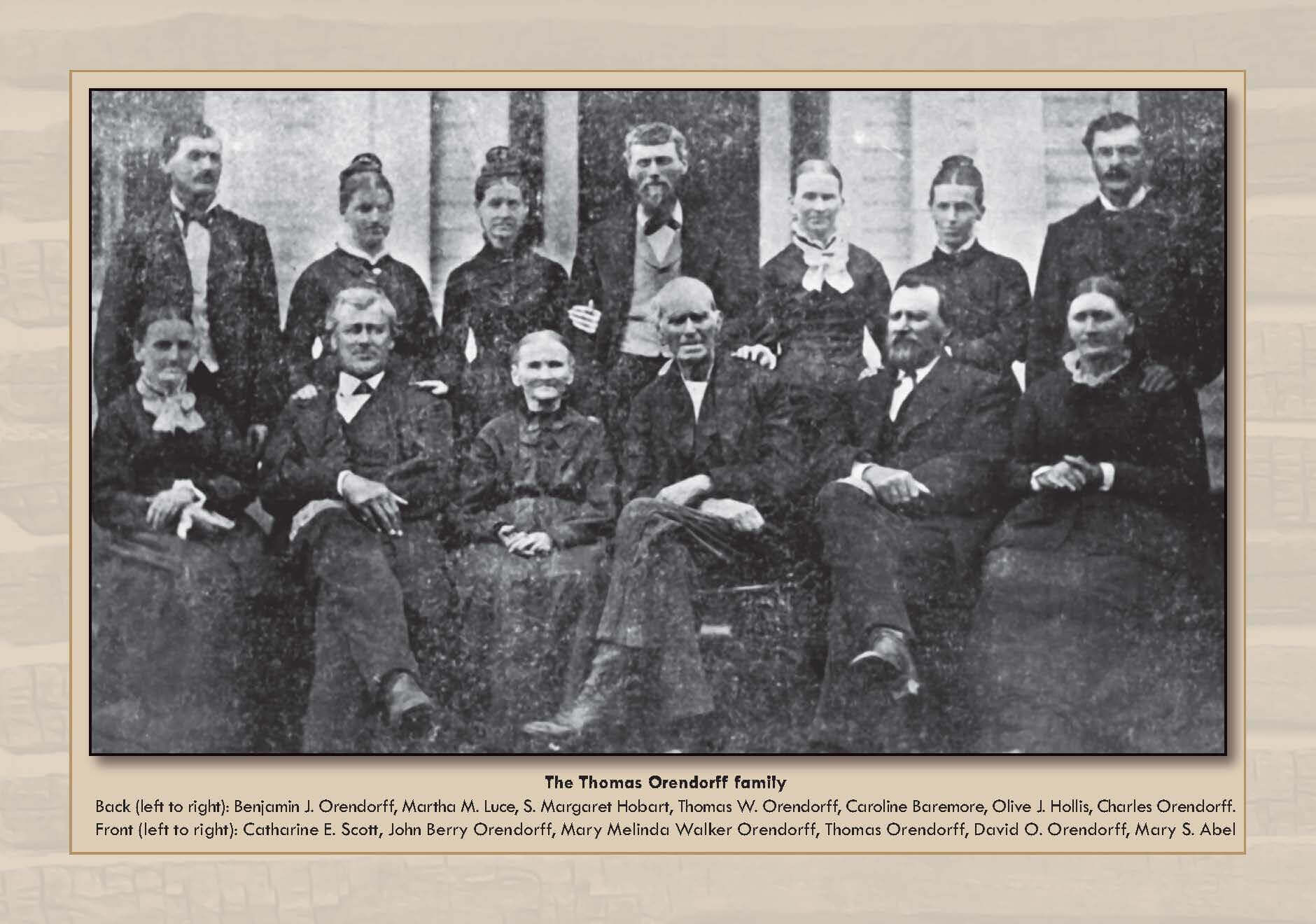Frontier – The Orendorffs
McLean County was a wilderness when the first white settlers arrived. They left behind over farmed land and crowded conditions. Some came because title to the land they left behind was uncertain. Making a home proved challenging.
For Mary Walker Orendorff, life on the frontier included few refinements or comforts.
With limited resources, setting up and maintaining a home, and raising children were her biggest challenges.
Mary arrived in Blooming Grove with her family in 1824. That fall she married Thomas Orendorff and moved into his crude log cabin.
See a vignette portraying their home life in our exhibit here!
Frontier settlers like the Orendorffs relied on hunting and gathering to feed themselves.
Furs were tanned and used for clothing, hats, and gloves, or traded for needed supplies.
Frontiersmen like brothers Thomas and John Orendorff would have worn buckskin clothing for hunting. The leather was waterproof and protected the hunter’s arms and legs from thorns and brambles.
Reproduction buckskin tunic and leggings, and racoon hat

View this object in Matterport
The Pennsylvania type hunting rifle, a prized possession, was a necessity for survival.
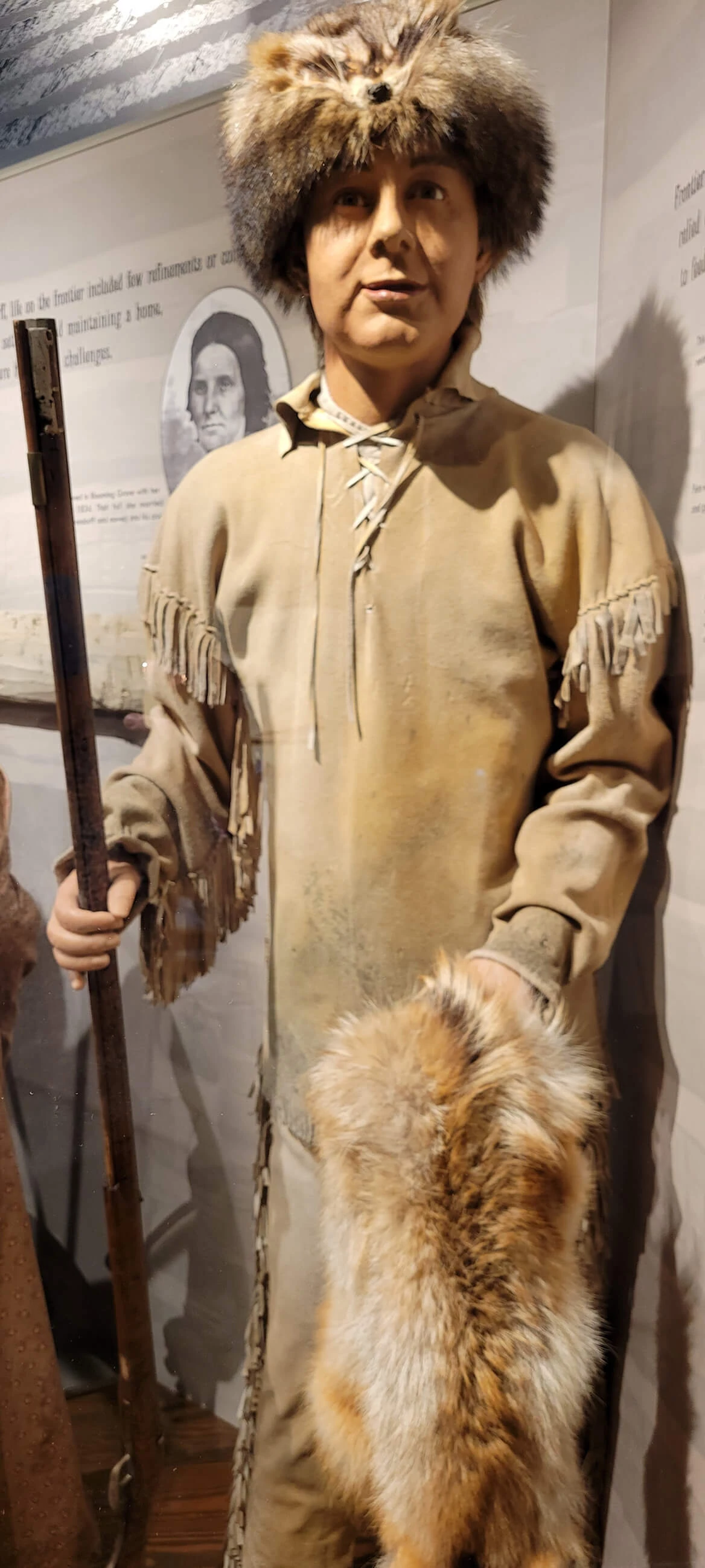
Facing the difficulties of basic survival was the Orendorffs' first course of action.
The brothers relied on hunting and trapping of deer, turkey, and smaller birds and animals to feed themselves.
Good hunters had all the necessary equipment. This included a bullet mold for making rifle balls (bullets); a powder horn; a skinning knife for removing the hide of the game; and a hide scraper for scraping the hide. This equipment was stowed in their saddle bags.
John B. Orendorff’s bullet ladle, circa 1850

View this object in Matterport
Donated by: the heirs of John B. Orendorff
723.109

 Making a Home
Making a Home
 A Community in Conflict
A Community in Conflict
 Working for a Living
Working for a Living
 Farming in the Great Corn Belt
Farming in the Great Corn Belt
 Abraham Lincoln in McLean County
Abraham Lincoln in McLean County
